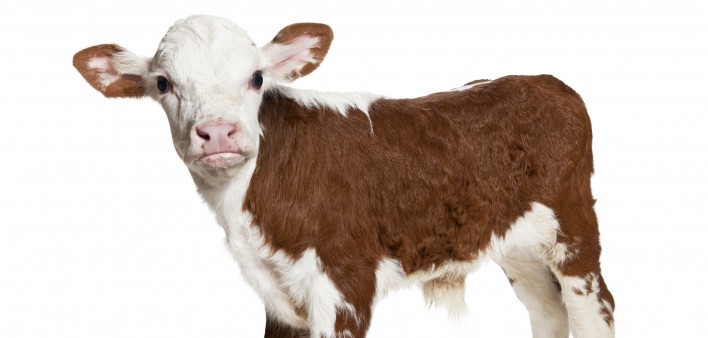Researchers have succeeded in immunizing calves and prompting them to produce so-called broadly neutralizing antibodies, or bNAbs, against HIV. This success likely opens the door for important future scientific discoveries in the effort to develop and mass-produce new means of treating and preventing the virus.
“A minority of people living with HIV produce bNAbs but only after a significant period of infection, at which point virus in their body has already evolved to resist these defenses,” explains Dennis R. Burton, PhD, the director of the National Institutes of Health (NIH) Center for HIV/AIDS Vaccine Immunology and Immunogen Discovery, a lead author of the calf study.
Using animals for production—a common practice in the pharmaceutical industry—of effective HIV bNAbs could help solve the pressing question of whether enough antibodies could be produced to satisfy the ultimate demand for their use.
In the new study, researchers injected immunogens (proteins designed to mimic proteins on HIV’s surface) into the flanks of four calves. All four young cows developed broadly neutralizing antibodies to HIV in their blood, as quickly as 35 to 50 days later.
These particular antibodies are not likely suitable for use in humans in their current form. However, further investigation into the calves’ impressively rapid production of antibodies could help answer some critical HIV-prevention research questions.
“Unlike human antibodies,” notes Burton, “cattle antibodies are more likely to bear unique features and gain an edge over complicated HIV immunogens.”
Burton and his colleagues found that one particularly potent calf-produced antibody binds to a key site on HIV’s surface that the virus uses to attach to and infect immune cells. Quaintly named NC-Cow 1, the antibody neutralized about two thirds of a range of types of HIV that the scientists tested it against.
Going forward, researchers may pursue mimicking or modifying NC-Cow 1 or other antibodies like it for use as HIV treatment, as a component of a vaccine or as pre-exposure prophylaxis (PrEP).







Comments
Comments